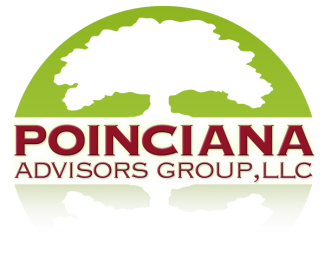
Dot Your I's and Cross Your T's: Navigating the Complexities of Public Service Student Loan Forgiveness
PAG 10/9/19
Becca Craig, ABA, 10/3/2019
The past few years have seen the U.S. Department of Education’s Public Service Loan Forgiveness (PSLF) program garner a whirlwind of criticism, from borrowers, watchdogs and lawmakers alike. Its complex and poorly communicated requirements have resulted in hundreds of headlines, several lawsuits, and thousands of heart-breaking personal accounts.
The program’s administration has been troubled, to say the least. But its essential promise – student loan forgiveness in exchange for public service – remains an attractive and significant benefit to nurses, physicians, teachers, social workers, attorneys, military personnel and other public servants when building a comprehensive financial plan. With time, attention and a thorough understanding of its many intricacies, student loan forgiveness through the program can help individuals and families strengthen their financial foundation.
Costly monthly payments and loan terms stretching decades can present tangible obstacles to financial well-being, especially for those working in public service and the nonprofit sector. To encourage college graduates into such careers, Congress created the PSLF program. Established in 2007, the program is a federal entitlement (similar to Social Security retirement benefits) that requires the Education Department to “cancel the balance of interest and principal due” for qualifying loans after borrowers make 120 qualifying payments via eligible repayment plans while working for qualifying public service employers or in qualifying public services, among various other requirements. Forgiveness under PSLF is income tax-free.
Interest in the PSLF program has grown in recent years, as the first cohort of pioneering borrowers began applying for loan forgiveness in October 2017. The program’s track record prompted Congress to launch the Temporary Expanded Public Service Loan Forgiveness (TEPSLF) program in 2018, but this supposed fix has had its own struggles making the grade.
Clear, effective communication and information could have prevented many of the PSLF program’s headaches and breakdowns. That obviously didn’t happen, but even so, final responsibility for obtaining student loan forgiveness falls on borrowers.
Navigating the PSLF Program
Consider the following proactive measures, both for debt-laden recent graduates and public service career veterans, to help you successfully navigate the loan forgiveness process.
Check your employment. Currently, 33 million Americans qualify for PSLF. Entry into the program is conditional on an applicant’s employer, not job title. Qualifying employment includes full-time work in federal, state or local government or for a 501(c)(3) nonprofit organization. Additionally, applicants employed by private nonprofit organizations that provide a public service (for example, in public safety, public health or public education) are eligible in certain cases. Before you write off the opportunity, double check to confirm (rather than assume) you don’t qualify.
Ensure that you are enrolled in and repaying your loans on an income-based repayment plan. There are technically four different income-based repayment plans, but loan servicers commonly default to the Income Driven Repayment or Income Contingent Repayment plans. Both allow for up to 15% of borrowers’ discretionary income to go toward calculating their loan payments. Electing the Revised Pay As You Earn (REPAYE) plan caps monthly loan payments at a maximum of 10% of discretionary income (in most cases).
This public service loan forgiveness calculator compares the various income-driven student loan repayment plans. Only payments made after Oct. 1, 2007, count as qualifying payments. Making partial monthly payments or more than one payment in a month does not accelerate the accumulation of 120 payments. And yes, any month when your scheduled payment under an income-driven plan is $0 will count toward loan forgiveness. The Education Department has directions on how to apply for an income-driven repayment plan.
Make sure you have qualifying loans. Only Direct Loan program loans are PSLF eligible. Loans received under the Federal Family Education Loan (FFEL) program, the Federal Perkins Loan program, or any other program aren’t recognized. If you have FFEL program or Perkins loans, you may consolidate them into a Direct Consolidation Loan to take advantage of PSLF, but be sure to avoid the following huge pitfall.
Consolidating loans resets your qualifying repayment count. Consolidating your federal loans resets your number of qualifying payments back to zero. Don’t consolidate if you’ve already made eligible payments under the PSLF program.
Maintain complete and up-to-date employment certification forms. Another requirement is to complete the Employment Certification Form. How often should you submit it? Frequently, in particular:
- When you begin a new job.
- When you have a new employer.
- Annually (a best practice to keep the Education Department in the loop and you on track).
The certification form requires the signature and contact information of an authorized official (someone who has access to your employment or service records). While borrowers can (and absolutely ought to) submit certification forms for past employers, which will count toward the program’s 120 qualifying payments, acquiring a signature from an old employer may prove difficult or downright impossible (for instance, an organization’s insolvency or separation on less-than-stellar terms). If your employer has questions, direct them to the guide compiled by the Consumer Financial Protection Bureau for answers.
Catch up on any past-outstanding forms and set an annual calendar notification to recertify.
Persist if your PSLF application officially has been declined. In 2018, Congress appropriated $700 million for a temporary expansion to PSLF, the aforementioned TEPSLF program. It is designed for borrowers who met their 120 payments, but at some point had made them in an otherwise non-qualifying payment plan. TEPSLF funds are available on a first-come, first-served basis.
Unfortunately, a September 2019 report from the Government Accountability Office found that the TEPSLF process also was not clear to borrowers. As of May 2019, the Education Department had processed about 54,000 TEPSLF requests and approved approximately 1% of them.
What wasn’t communicated effectively was the TEPSLF program requirement that applicants must first apply to and be declined under the original PSLF program. The consequences of this omission were dismal; 71% of denied TEPSLF requests were because borrowers had not submitted a PSLF application (an application for a program they knew they did not qualify for).
Once you’ve been denied forgiveness under the PSLF program, you may be eligible to apply for TEPSLF.
The First Next Step
While convoluted and complicated, the best approach to student loan forgiveness is a proactive one. Ensure you have qualifying loans, are enrolled in a qualifying payment plan, work for qualifying employers, and that your official record reflects this (it can be obtained online from the Federal Student Aid office).
Make a point of discussing all your student loan plans, including your intention to utilize the PSLF or TEPSLF programs, with your wealth advisor. That’s the first next step in enlisting the appropriate resources and specialists to help you realize your goal of loan forgiveness.
By clicking on any of the links above, you acknowledge that they are solely for your convenience, and do not necessarily imply any affiliations, sponsorships, endorsements or representations whatsoever by us regarding third-party Web sites. We are not responsible for the content, availability or privacy policies of these sites, and shall not be responsible or liable for any information, opinions, advice, products or services available on or through them.
The opinions expressed by featured authors are their own and may not accurately reflect those of The BAM ALLIANCE®. This article is for general information only and is not intended to serve as specific financial, accounting or tax advice.
© 2019, The BAM ALLIANCE®
Becca Craig, ABA
Associate Wealth Advisor
Becca designs sound financial plans that challenge outdated financial frameworks and let her clients fearlessly engage their resources and embrace an abundance mindset. As her clients’ “financial advocate,” she loves making money work for her clients—not against them—so they can focus on the people, endeavors and causes they care about most.


